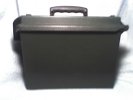|
Written by Jim Kinter, K5KTF
|
|
Rick Palm K1CE I had a long conversation with the ARRL Headquarters Emergency Preparedness Manager Mike Corey, KI1U, recently to set some new direction and goals for the newsletter for the immediate future: First, as the Headquarters' lead staffer on ARES, HQ emergency response planning and operations, and served agency liaison, Corey would like to see more "ink" devoted to state-of-the-art, pioneering and envelope-pushing of emergency and disaster communications modes, systems and networks; he cited as examples the efforts of some groups to develop a broadband network for Amateur Radio public service operators (see, for example, http://www.hsmm-mesh.org/) similar in concept, if not scope, to the up and coming, much-publicized Public Safety broadband service development. For an amateur broadband network to exist, use of the frequencies in the GHz ranges would allow for the necessary speeds/bandwidth, of course, which, while enhancing our ARES volunteers' ability to meet the ever-more demanding needs for sophistication in services by emergency managers, would also serve to justify our access to those higher frequency ranges that are coming under ever-increasing pressure from commercial interests. Thus, as editor, I am seeking contributions of reports of such efforts from the field to stimulate the research and development of such activity on a broader scale. Henceforth, that will be one of the new pillars of direction for this newsletter.
|



